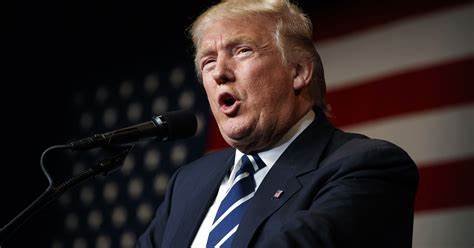Trumponomics – What might we expect under a second term?
We start 2025 with Trump once again being elected as the next President of the United States, and with that comes a sense of great trepidation around the globe. His decisive victory in November left many political pundits and exit polls in shock, as he won both the election and the popular vote—something he failed to do in 2016. Republicans achieved a clean sweep across the board, with Congress also swaying red. As the election result became clear, it left some disheartened, but the markets breathed a collective sigh of relief.
Dear readers, you may be tired of hearing me repeat the same adages, but one of the main causes of market volatility is uncertainty, and with this steadfast victory, volatility was temporarily avoided. It was quite the year for Trump—starting with his criminal convictions, followed by two assassination attempts, and finally ending the year as the next POTUS. But what will a second Trump presidency bring?
The effects won’t just be felt in the US; it’s likely that his international policies will shape expectations for global growth and markets, at least in the short term. As we may all be aware, Trump’s foreign policies are somewhat aggressive, and under his first presidency, his tariffs resulted in Americans paying an additional $80 billion in taxes. These tariffs have already shifted the international import market, with China now falling behind Mexico in terms of its share of US imports. The reason for this is twofold: nearshoring and reshoring.
With the supply chain shock that hit the world in 2022, many countries looked to move their manufacturing onshore or, if that wasn’t feasible, closer to the US. Reshoring is more intricate; some Chinese-based manufacturers are now looking to set up plants in Mexico to avoid steep tariffs. The New York Times has reported that this phenomenon began back in 2021, with one Chinese company, Hisun (which produces all-terrain vehicles), moving its operations from China to Mexico.
Source: Census Bureau, graphic from Wall Street Journal (2024)
Trump’s campaign pledge included a 10% flat-rate tariff on all imported goods, excluding Chinese goods, which would face a steeper 60% tariff, and Chinese car imports, which could face a potential 100% tariff. The risk here is rising inflation. While voters were hoping for the ‘reshoring’ of supply chains to the US, the likely effect is that large corporations will keep their current suppliers and pass on the price increases to the end customer within the US itself.
Some analysts fear this could dampen US growth, and consequently global growth. Estimates suggest that the 10% tariff on all imports may cause a drag on GDP of up to 1%. Deglobalisation has been a buzzword since the supply chain issues during the COVID pandemic, and some speculate that a Trump presidency will serve as a further catalyst. While this wouldn’t result in a full move to autarky, it could mean the US re-evaluates its external trading partners.
Alternatively, some believe this could be a positive driver for 2025. US growth is a positive sign for global markets, and these tariffs, alongside Trump’s generally loose fiscal policies, could, theoretically, promote US growth. Fitch Ratings has revised its US growth prediction upwards to 2.1%. With tariffs concentrated on China, supply chains may be diverted to other emerging economies, boosting their growth, such as Mexico, as described above. While it may seem from the rhetoric that the US is reliant on Chinese goods, some of these needs can be fulfilled by other trading partners, and there is optimism for what this may do to emerging market equities and debt over the next few years.
Powell Exit Stage Right?
I love hearing client questions, and since Trump’s victory, I’ve received the same one a few times: will Trump really fire Powell, and what would that mean? Like many things Trump, on this occasion, his bark may have been bigger than his bite. During the election campaign, he was steadfast in his intention to replace Powell, only to go back on his word in December. The clash arose over Trump’s wish to lower interest rates faster than the Fed was comfortable with.
In reality, Trump doesn’t have the power to fire Powell or any head of the Fed; that power lies with the Supreme Court, and there must be cause’ for such an action. Realistically, Trump seeks some control over interest rates, which goes against the independence that the Fed (and many other central banks) strive to maintain. Powell is opposed to this idea, and it is unlikely to come to fruition in the immediate future. However, with Powell’s term ending in 2026, it will be interesting to see how his replacement handles any pressure from Trump.
By the end of his second term, President Trump would be the oldest US president in history, and it may be time for him to officially retire to Mar-a-Lago (this time without all the secret documents). While we can’t say for certain what a Trump presidency will entail, it’s likely that some of what he said on the campaign trail won’t come to pass. Trump will focus on continuing the strength of the US markets, as he views this as his true legacy. So, now more than ever, it’s best to ignore the noise that may come over the next four years and simply enjoy (or, at the very least, grin and bear) the journey ahead.
But what do you think the next Trump Presidency will bring? Let us know in the comments or by clicking the link below.


